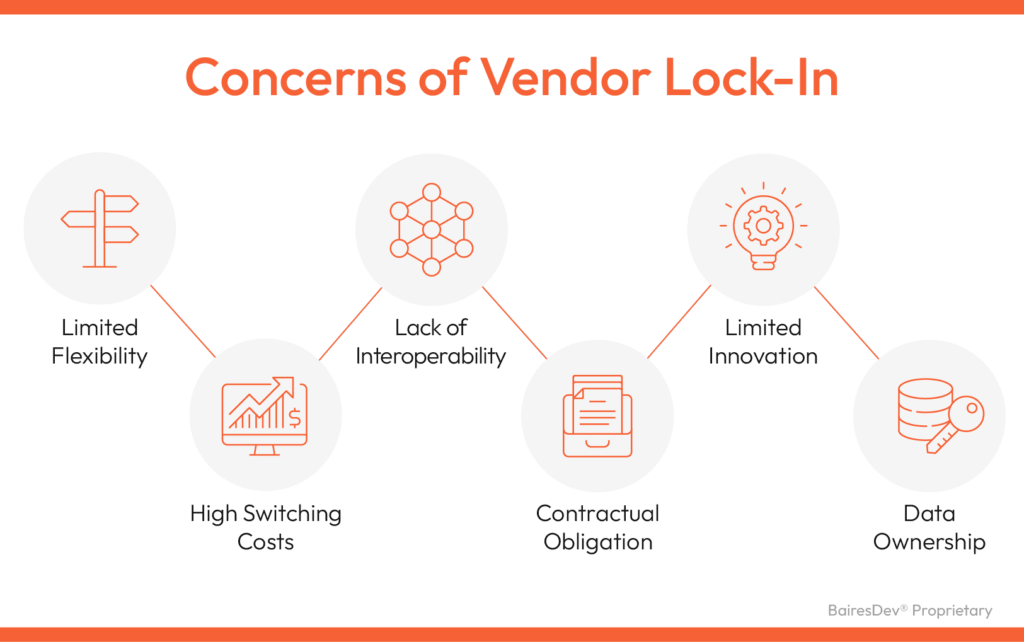We’ve all heard the term “service” at a tech conference, but what does it really mean in the context of today’s digital economy? Let’s cut through the jargon and dive into the nitty-gritty of as-a-service models.
At its core, an as-a-service model is a way for businesses to leverage third-party services on a subscription basis, rather than investing in their own infrastructure or software. It’s like renting a tuxedo for a wedding (the service) instead of buying one outright (the traditional ownership model). You get all the benefits without the long-term commitment or maintenance.
As-a-service models do what they say on the tin: they provide products as a service, most of them with a pay-as-you-go model that lets you have a great deal of control over your budget. For the most part, these services are amazing for both startups and big businesses alike.
Aside from infrastructure, you also get other perks, like worldwide connectivity and integrated systems. AWS and Azure are both great examples of one-stop solutions for filling business needs from storage to artificial intelligence and everything in between. It’s really comfortable, but it also means that you are heavily encouraged to put all your eggs in a single basket. And that brings its own set of issues.
For instance, consider cloud storage services. They offer us vast amounts of storage space without the need to maintain physical servers. However, we’re effectively handing over control of our data — perhaps our most valuable asset — to third parties. What happens if they hike their prices? Or worse yet, what if they suffer a security breach?
In this article, we’ll unpack these concerns further and explore how we can navigate this brave new world without losing our digital sovereignty.
Interested in learning more about SaaS development processes? Click here to learn.
The Emergence of Technofeudalism
As we traverse further into the digital age, a new socioeconomic system is taking shape — one that bears an uncanny resemblance to the feudal systems of yore. This phenomenon has been coined “technofeudalism” by the New York Magazine. In this system, we are akin to medieval serfs, while tech companies play the role of feudal lords.
Now, before you dismiss us as Luddites with a flair for dramatic metaphors, let’s delve into the technicalities. In a traditional feudal system, serfs worked on land owned by lords in exchange for protection and a share of the produce. We are renting our own little digital land to build our products, and in exchange, we pay for the protection and benefits provided.
But there is another aspect of feudalism that has crept its way into this model. While serfs used the same currency as the rest of society for the most part, some lords, especially in remote areas, gave out scripts or tokens instead of coins. These tokens would serve to buy food and services from the local economy, keeping a metaphorical moat around the manor.
Since these tokens weren’t recognized as official coins, it was very hard for serfs to exchange it for real coin, and even if they managed to exchange it, the new owner would have to spend it in the lord’s land. In other words, it was a closed ecosystem.
Just like these lords created a tightly controlled and intertwined market, so are tech companies building interconnected ecosystems that work really well together but at the same time make it difficult to leave once you’ve become a client.
Once we invest heavily in a service provider, we limit our freedom and ability to change or adapt. What happens if they decide to change their terms of service? Or if we see a price hike? technofeudalism highlights how as-a-service models can lead us down a path where we surrender more control than intended. If you want to learn more about the concept of technofeudalism, watch this video, where economist Yanis Varoufakis explains in details his thoughts.
How as-a-Service Models Put You at Risk
The as-a-service models often operate under a pay-as-you-go structure. This means that we only pay for what we use — sounds fair enough, right? Well, not quite. Let’s take a closer look at this through an example.
Imagine you’re using a cloud storage service (a classic SaaS model). You start with a basic plan but soon find yourself needing more space as your digital assets grow. So you upgrade to a higher tier — more cost for more space. But here’s where it gets tricky: the service provider has complete control over all aspects of the pricing schemes.
Some services might structure their tiers in such a way that you can end up stuck between a tier that’s too restrictive for you and one that, while accommodating, is too expensive because it offers more functionality than you actually need.
Most services will offer deep discounts for picking their custom solutions. For example, AWS favors DynamoDB over other database solutions. It doesn’t matter how good the service is; you might end up choosing a subpar choice just because the price difference is significant enough.
Shifting away from a partner in this context is extremely difficult. You can’t just copy and paste your microservices architecture and take your money someplace else. And to be fair, unless you are another tech giant, there is very little you can do in terms of legal action if these providers decide to change their terms of service.
This situation illustrates how as-a-service models can create a risky environment. We become captive customers, locked into services due to high switching costs or lack of alternatives.
We are not saying that service providers are evil or that they are doing this because they want to exploit their clients. They are just like everyone else, people who are building solutions and trying to keep bringing as many clients to their ecosystem as possible.
The Hidden Risks of as-a-Service Models
Now, we don’t mean to rain on the as-a-service parade, but it’s important to understand that these models are not without their pitfalls. While they may be cost-effective and convenient, they also come with a few hidden risks that could turn your digital dream into a nightmare.
Firstly, there’s the issue of data security. In an as-a-service model, your data is stored on the service provider’s servers. This means you’re relying heavily on their security measures to keep your precious information safe from cyberthreats. Then there’s the risk of service disruption. If the provider experiences downtime or technical issues, your business operations could be affected.
Lastly, there’s the aforementioned risk of vendor lock-in. Switching providers can be costly and time-consuming due to high migration costs and potential compatibility issues with other systems.

So while as-a-service models do offer some significant benefits, it’s essential that we approach them with eyes wide open, fully aware of these potential risks lurking in the shadows.
Consumer Privacy Concerns
In the as-a-service models, we’re dealing with a whole new level of potential privacy pitfalls. When we entrust our data to third-party providers, we’re not just handing over files and folders; we’re essentially giving them access to our digital identities.
Now, service providers could inadvertently become conduits for privacy breaches. When your data is out there on someone else’s servers, it’s exposed to a greater risk of unauthorized access or misuse. Consider this scenario: You use a SaaS application for CRM. It stores sensitive information about your clients. If a security breach occurs at your service provider’s end, all that sensitive client data could fall into the wrong hands.
These service providers have some of the best cybersecurity teams on the planet, but the fact that your data is in the cloud is in itself a liability. If it’s connected to the internet, then there is a way to reach it. For example, the last known AWS data breach was in 2022, and it was, unfortunately, an inside job.
The Role of Regulation and Government Policies
When it comes to the digital economy, regulation is often viewed as a pesky mosquito buzzing in the ear of innovation. But let’s reframe that image for a moment. Instead, consider regulation as a chess game where each move determines the balance between technological progress and societal well-being.
Firstly, we must acknowledge that government policies can act as catalysts for equal access to as-a-service models. Implementing laws that encourage competition and prevent monopolies, ensure that no single entity holds the reins of our digital destiny.
Moreover, governments can also foster digital literacy through educational initiatives. Think about it: What good is access to technology if one doesn’t possess the skills to utilize it?
Here’s where things get technical. Consider GDPR — Europe’s General Data Protection Regulation. This piece of legislation has set global standards for data privacy and protection. It empowers users by giving them control over their personal data while holding companies accountable for any misuse.
Regulation isn’t about stifling innovation or playing Big Brother. It’s about setting up a fair playing field where technology serves us all equitably and ethically. In this high-stakes chess game, strategic moves toward sensible regulation could just checkmate technofeudalism.

Conclusion: Addressing Technofeudalism in as-a-Service Models.
We’ve traversed the landscape of as-a-service models, from their promise of efficiency to their potential pitfalls. We’ve highlighted concerns about data privacy and security and the risks of putting all your eggs in one basket.
In this conclusion, we want to address a concept that’s been lurking in the shadows throughout our discussion: technofeudalism. This term refers to a potential digital future where a few tech giants control vast amounts of data and resources, leaving the rest of us as mere digital serfs renting a corner of their digital lands. It’s a chilling prospect, but one that needs addressing if we’re to ensure fair as-a-service models.
To tackle this threat head-on, we need robust regulatory frameworks that balance innovation with ethical considerations. But laws alone won’t cut it. We also need a cultural shift toward transparency and accountability in tech companies themselves. Only then we can avoid becoming pawns in a game controlled by digital overlords.
So here’s our final thought: Let’s not just adopt new technologies because they’re shiny and efficient. Let’s scrutinize them, understand their implications, and shape them so they serve us all equally well. After all, technology should be our tool, not our ruler.






